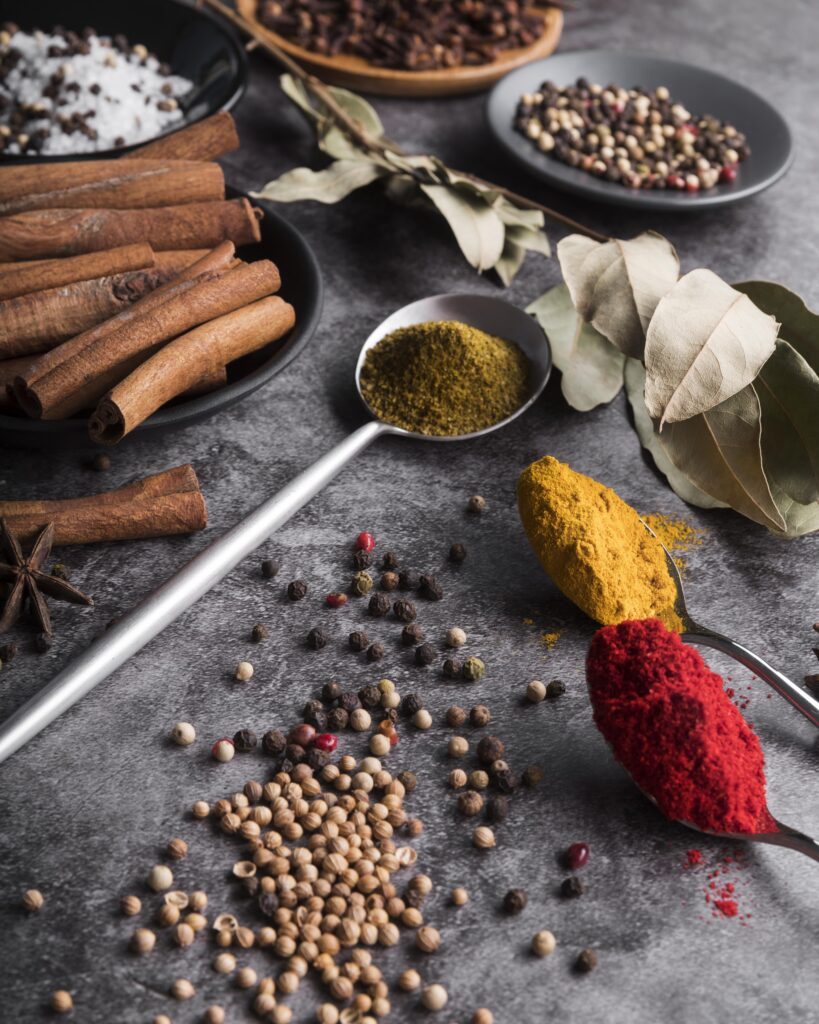Introduction
Spicy foods have a special place in our culinary experiences, adding excitement, flavor, and heat to our meals. From mild and tangy to blisteringly hot, spices have captivated our taste buds for centuries. In this article “Spicing Up Life: Exploring the Flavor, Health, and Challenges of Spicy Foods”, we will delve into the fascinating world of spicy foods, exploring the science behind them, their health benefits, cultural significance, and even the challenges they present.

The Science Behind Spicy Foods
Spicy foods owe their heat to a compound called capsaicin, which is found in chili peppers. Capsaicin stimulates receptors in our mouths, triggering a sensation of heat and causing us to perceive the food as spicy. Interestingly, capsaicin can also cause our bodies to release endorphins, creating a pleasurable sensation and even a mild natural high.
Health Benefits of Spicy Foods
Beyond the fiery sensation they provide, spicy foods offer several health benefits. Capsaicin has been found to have anti-inflammatory and antioxidant properties, potentially reducing the risk of certain chronic diseases. Additionally, spicy foods can aid digestion, boost metabolism, and promote weight loss. However, it’s important to note that individual tolerance to spicy foods may vary, and excessive consumption can cause digestive discomfort.
Popular Spices Around the World

Spices play a vital role in cuisines across the globe. Let’s take a culinary journey and explore some of the most popular spices used in various cultures. From the pungent flavors of cumin and turmeric in Indian cuisine to the aromatic notes of basil and oregano in Italian dishes, spices add depth and complexity to recipes, reflecting the unique culinary heritage of each region.
Culinary Uses of Spices
Spices are not only about heat; they also enhance the flavors of our favorite dishes. They can be used as seasonings, marinades, rubs, or even in desserts, providing a delightful contrast and elevating the overall taste profile. Whether it’s the smoky warmth of paprika in a barbecue sauce or the delicate heat of ginger in a stir-fry, spices offer endless possibilities to unleash creativity in the kitchen.
Exploring Different Levels of Spice
Spices come in a wide range of heat levels, catering to various preferences. From mild spices like paprika and black pepper to medium ones like cayenne pepper and jalapenos, and finally to the scorching heat of habaneros and ghost peppers, there’s a spice for every palate. Understanding these heat levels and knowing how to balance them in a dish can result in a harmonious symphony of flavors.
The Challenge of Spicy Foods
For some, the allure of spicy foods lies in the thrill of pushing their taste buds to the limit. From eating the world’s spiciest chili peppers to participating in fiery food challenges, the pursuit of the ultimate spice experience has gained popularity. However, it’s crucial to approach these challenges with caution, as consuming extremely spicy foods can have adverse effects on the body and may even pose risks.
Tips for Enjoying Spicy Foods

If you’re new to spicy foods or want to enhance your tolerance, there are ways to ease into the experience. Start by gradually introducing milder spices into your meals and gradually build up to hotter varieties. Consuming dairy products, such as milk or yogurt, can help alleviate the burning sensation caused by capsaicin. Above all, listen to your body and respect your own limits when it comes to spicy foods.
Spicy Food and Cultural Significance

Spicy foods hold a special place in various cultures worldwide. They are often deeply ingrained in traditional cuisines and can symbolize cultural identity, heritage, and regional pride. From the fiery curries of India to the zesty salsas of Mexico, spices can tell stories of history, migration, and the blending of diverse culinary traditions.
Happy Spicing Up Life!
Conclusion
Spicy foods add a unique dimension to our dining experiences, tantalizing our taste buds and invigorating our senses. From the scientific explanations behind their heat to the wide array of health benefits they offer, there’s more to spicy foods than meets the eye. So next time you’re at the dinner table, don’t be afraid to embrace the spice and embark on a flavorful adventure.
FAQs
1. Can spicy foods cause stomach ulcers?
Contrary to popular belief, spicy foods do not cause stomach ulcers. However, if you already have an ulcer or a sensitive stomach, consuming extremely spicy foods may exacerbate discomfort. Listen to your body and consume spicy foods in moderation.
2. What can I do if I accidentally eat something too spicy?
If you find yourself overwhelmed by the heat of a spicy dish, reach for a glass of milk or yogurt. Dairy products contain casein, which helps neutralize the capsaicin and provides relief from the burning sensation.
3. Are there any health risks associated with eating spicy foods?
While spicy foods can offer health benefits, excessive consumption can lead to digestive discomfort, heartburn, and even irritation of the gastrointestinal tract. It’s essential to enjoy spicy foods in moderation and pay attention to your body’s response.
4. Can spicy foods help with weight loss?
Spicy foods may boost metabolism and aid in weight loss to some extent. However, the effect is relatively small and should not be relied upon as the sole strategy for weight management. A balanced diet and regular exercise remain crucial for maintaining a healthy weight.
5. Are there any cultural taboos or traditions surrounding spicy foods?
Yes, some cultures may have specific taboos or traditions related to spicy foods. For example, in certain regions, spicy foods are believed to have aphrodisiac properties or are associated with specific festivals and rituals. It’s always fascinating to explore the cultural significance of spices and the stories they hold.

Wonders of Spices, Bringing Wonders to Life.